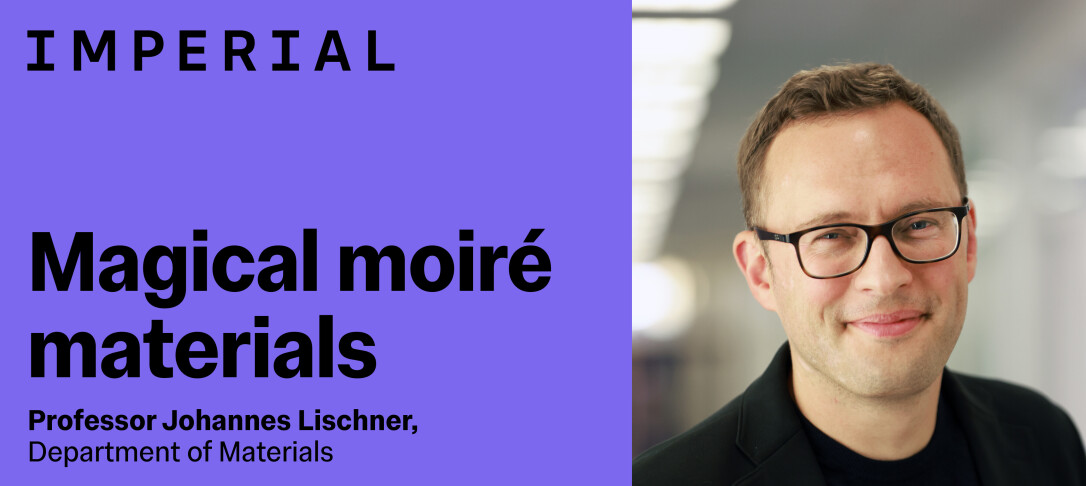
Join Professor Johannes Lischner, Professor in Theory and Simulation of Materials, Department of Materials, for his Imperial Inaugural online or in person.
There is no need to register to attend so please be sure to use the add to calendar button.
We look forward to seeing you on Wednesday 5 February!
Summary
Putting things on top of other things allows us to create complex and useful structures: houses are built by placing bricks on top of other bricks and solar cells are fabricated by growing thin films of different materials on top of each other.
Two-dimensional materials, such as graphene, have a thickness of only one (or a few) atoms. When one two-dimensional material is placed on top of another one in such a way that the two materials are not perfectly aligned, a beautiful moiré pattern emerges. Such a moiré material possesses new properties that are not found in the two-dimensional materials it is composed of. For example, a moiré material consisting of two graphene sheets can become an insulator even though each of the graphene sheets is a conductor. This observation generated a huge excitement in the research community in recent years.
Johannes Lischner is a Professor of Theory and Simulation of Materials at Imperial College London whose research focuses on understanding the properties of nanomaterials. In his inaugural lecture, he will describe his work on modelling nanomaterials which exhibit moiré patterns, such as twisted bilayer graphene or twisted trilayers of transition-metal dichalcogenides.
About the speaker
Johannes obtained a PhD in Physics from Cornell University in 2010. Until 2014, he was a postdoctoral researcher at the University of California in Berkeley and at Lawrence Berkeley National Laboratory. Then, he moved to Imperial College as a Royal Society University Research Fellow and was hired as a Lecturer in the Department of Materials in 2016. He is currently a Professor in Theory and Simulation of Materials and the Director of the MSc in Advanced Materials Science and Engineering. He is also Imperial’s Director of the Thomas Young Centre for Theory and Simulation of Materials.


